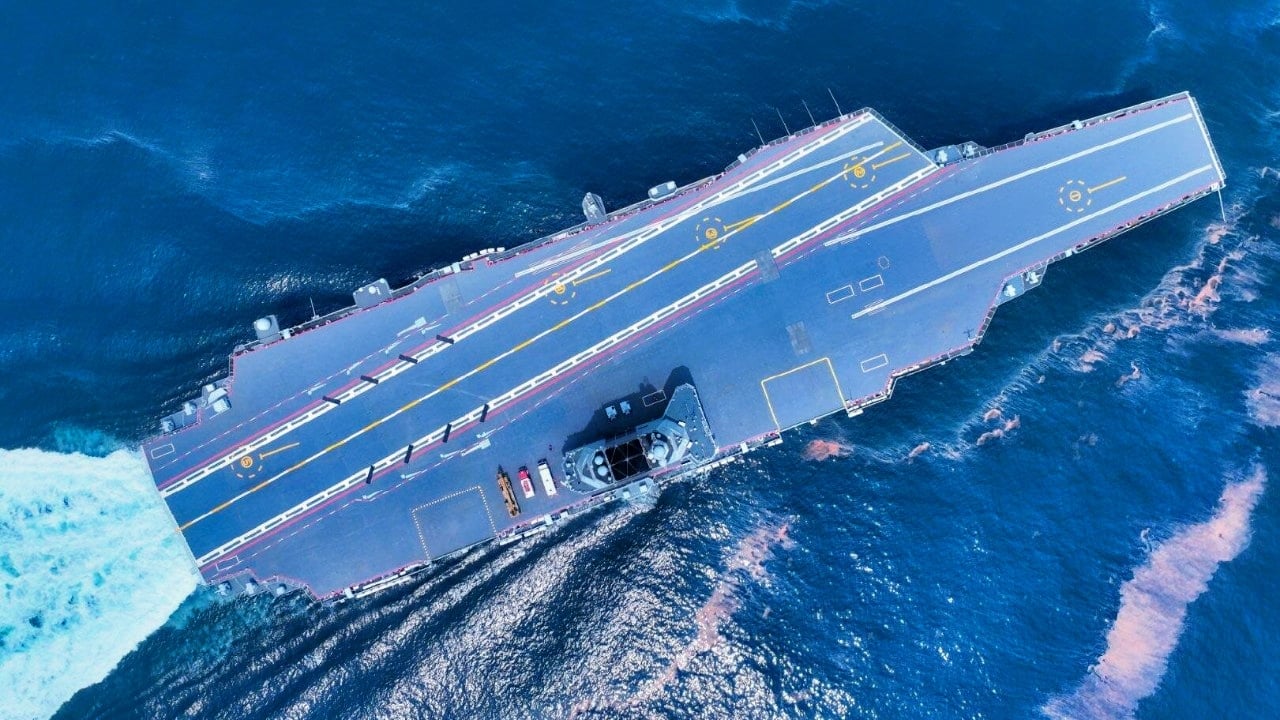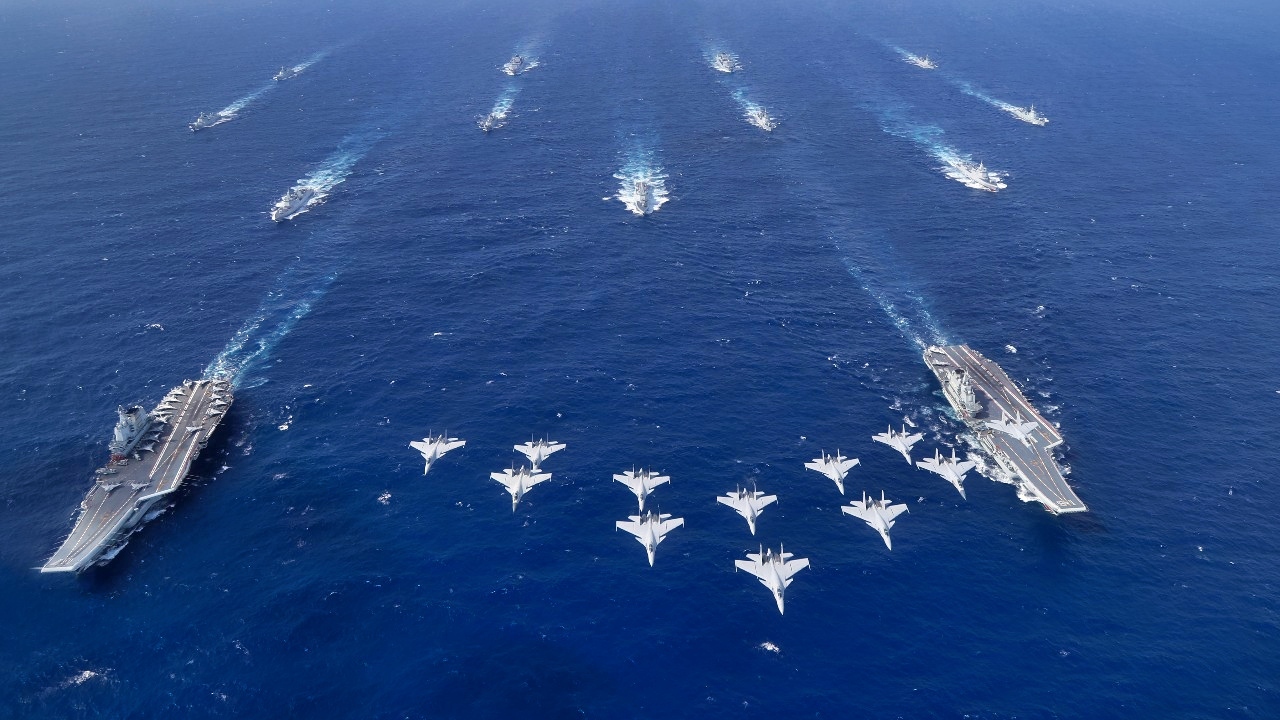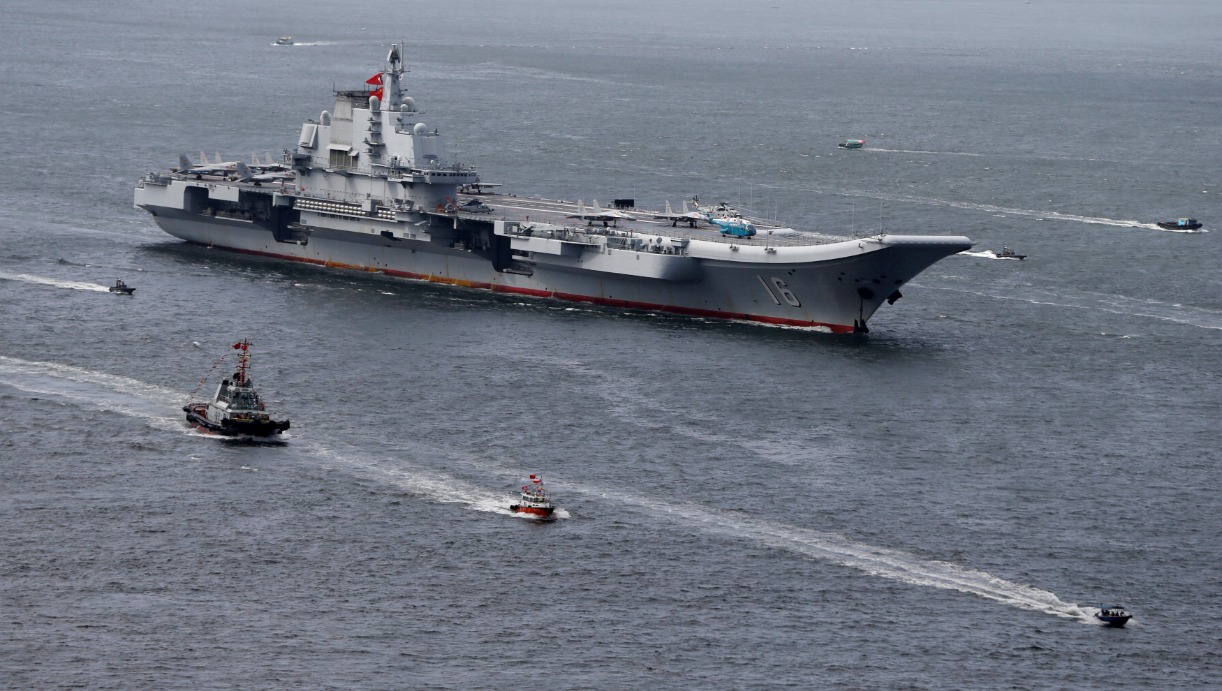
The U.S. Navy’s Worst Nightmare: China Building a ‘Nuclear’ Aircraft Carrier
What You Need to Know: China’s recent construction of a land-based nuclear reactor prototype signals its determination to build a nuclear-powered aircraft carrier, elevating the People’s Liberation Army Navy (PLAN) from a regional force to a global challenger.

-Unlike its current carriers, designed to operate within China’s anti-access/area-denial (A2/AD) zone, a nuclear-powered carrier would extend Beijing’s reach beyond the First Island Chain, potentially up to the Third Island Chain, including Hawaii.
-This development poses a serious strategic challenge to the U.S., with China edging closer to dominating the Indo-Pacific and threatening American trade and influence in Asia and possibly beyond.
China Prepares Its Nuclear-Powered Aircraft Carrier
File this one also under “quantity has a quality of its own.” A report out of Asia this week indicates that China’s People’s Liberation Army Navy (PLAN) has built a land-based prototype nuclear reactor for a “large surface warship.”
This is an obvious sign that the Chinese are working diligently to produce their country’s first indigenous nuclear-powered aircraft carrier. No, this does not mean China intends to become a carrier superpower the way that the Americans have. What it means is that China is building an overwhelming maritime support force for inevitably either blockading or invading neighboring Taiwan—and for dominating their near-abroad.
Why Aircraft Carriers?
As I’ve noted in early essays at this site, China’s carriers are not the centerpiece of their naval strategy. They are designed (at least for now) to operate beneath the protective canopy that China’s advanced anti-access/area-denial (A2/AD) systems in the region provide for China’s forces.
Those A2/AD networks keep American warships and planes over-the-horizon while allowing for Chinese forces to run roughshod over their local enemies (those local enemies ultimately rely upon US military guarantees to survive and if the Americans cannot fulfill those guarantees, then China will win).

But the construction of a potentially nuclear-powered carrier does show that Beijing has ambitions of going beyond the protective bubble of their regional A2/AD network. It will take years for China to build and perfect such a system—let alone mass produce it.
The three carriers China currently possesses (there is a fourth on the way) are meant for regional domination. The proposed nuclear-powered one, though, is truly meant to the challenge the Americans globally (which is likely where the Chinese will run into some problems as there is no global carrier force as advanced as the US Navy’s fleet).
Then again, should China be on the path to building multiple nuclear-powered carriers, they could extend their threat to US forces beyond those aforementioned A2/AD bubbles, complicating US warship approaches beyond the First Island Chain (which includes to Taiwan), and extending their threat all the way to the Third Island Chain (which includes Alaska’s Aleutian Islands and, more importantly, Hawaii).

Part of an Insidious Plot
Again, this is the inevitable next step of China’s master plan to dominate their near-abroad and to effectively box out the United States from being the dominant power in that region. The problems with this are twofold. First, the United States still relies on Asian trade. It’s a key market for America’s exports, accounting for 59 percent of all total US exports in 2023, according to the Office of the United States Trade Representative (USTR). Losing access to the region would be devastating for the US economy. Second, once China secures its hold on the Indo-Pacific, it will then naturally move beyond that region and into the Western Hemisphere.
We are On Notice, But We Have Not Noticed
Nuclear-powered Chinese carriers could at that point become a key power projection tool for China in our own hemisphere. Of course, we could create our own A2/AD networks to complicate China’s ability to interfere in our part of the world as much as they have done to theirs.
At the end of the day, though, China’s military threat has reached a new level. Barring some unforeseen economic or domestic political crisis, China will become the next great superpower. Washington is unprepared for such a sobering reality—and for how quickly that painful reality will be upon the United States.
About the Author:
Brandon J. Weichert, a National Interest national security analyst, is a former Congressional staffer and geopolitical analyst who is a contributor at The Washington Times, the Asia Times, and The-Pipeline. He is the author of Winning Space: How America Remains a Superpower, Biohacked: China’s Race to Control Life, and The Shadow War: Iran’s Quest for Supremacy. His next book, A Disaster of Our Own Making: How the West Lost Ukraine, is available for purchase wherever books are sold. Weichert can be followed via Twitter @WeTheBrandon.
Image Credit: Creative Commons.


